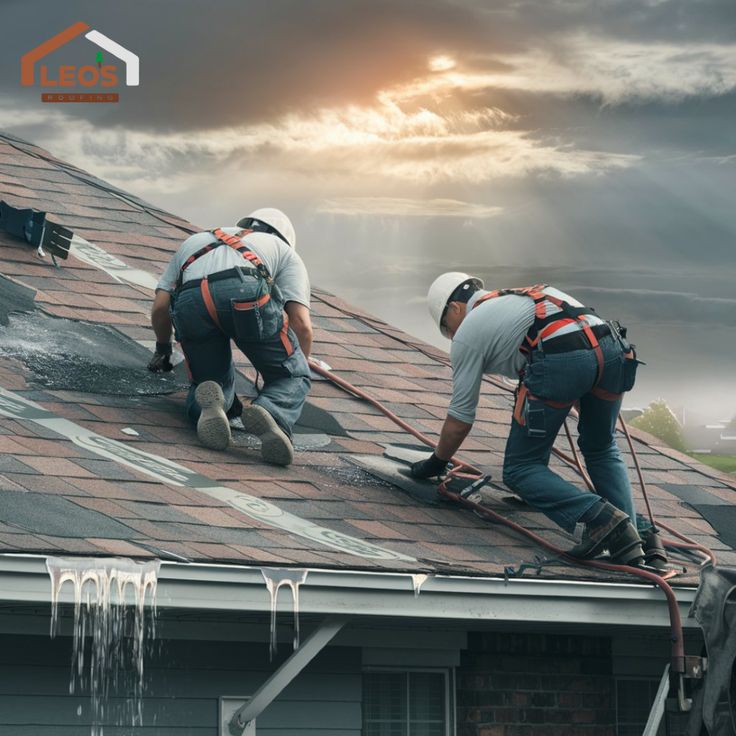Roof insulation is one of the most effective ways to improve energy efficiency and maintain a comfortable living or working environment. It acts as a barrier to heat flow, keeping your building cooler in the summer and warmer in the winter. Proper roof insulation not only saves energy but also reduces your carbon footprint and lowers utility bills. Here’s everything you need to know about roof insulation.
The Importance of Roof Insulation
Energy Efficiency: Roofs can be a major source of heat loss during the winter and heat gain during the summer. Insulating the roof reduces the amount of energy required to heat or cool a building. This leads to significant savings on energy bills.
Comfort: Roof insulation helps maintain a consistent indoor temperature, preventing the extremes of hot or cold that can make a space uncomfortable. This is particularly important in regions with harsh climates.
Environmental Impact: By reducing the energy required for heating and cooling, roof insulation helps lower greenhouse gas emissions. This makes it an environmentally-friendly choice that contributes to sustainable living.
Moisture Control: Insulation also acts as a barrier to moisture, preventing condensation within the roof space. This reduces the risk of mold growth and structural damage, extending the lifespan of the building.
Noise Reduction: Roof insulation can help block external noise, making the interior environment quieter and more peaceful, which is especially beneficial in noisy urban areas or near busy roads.
Types of Roof Insulation
There are several types of roof insulation, each with its own advantages depending on the type of roof and the specific needs of the building. The main types include:
Batt Insulation: Batt insulation is made from materials like fiberglass or mineral wool. It comes in rolls or pre-cut sections and is commonly used in residential buildings. Batt insulation is cost-effective and relatively easy to install, making it a popular choice for pitched roofs.
Spray Foam Insulation: Spray foam insulation is applied as a liquid that expands into a foam, filling gaps and crevices. It provides excellent coverage and an airtight seal, which enhances energy efficiency. Spray foam is often used in both residential and commercial buildings for flat or pitched roofs.
Rigid Foam Insulation: Rigid foam boards are made from materials like polystyrene, polyurethane, or polyisocyanurate. They are durable and provide a high level of insulation. Rigid foam insulation is commonly used in flat roofs, as well as in walls and floors for additional thermal resistance.
Loose-Fill Insulation: Loose-fill insulation consists of small particles of materials such as cellulose, fiberglass, or mineral wool. It is blown into the roof space using specialized equipment, making it ideal for insulating hard-to-reach areas. This type of insulation is often used in attic spaces.
Reflective Insulation: Reflective insulation uses aluminum foils to reflect radiant heat rather than absorbing it. This type of insulation is particularly effective in hot climates, where it helps keep buildings cool by reducing the amount of heat entering through the roof.

Choosing the Right Roof Insulation
When selecting roof insulation, there are several factors to consider:
Climate: The climate in your region plays a significant role in determining the type of insulation that is most effective. In colder climates, insulation with a higher R-value (resistance to heat flow) is essential for retaining heat. In warmer climates, reflective insulation may be more effective in keeping heat out.
Roof Type: The structure and design of the roof also influence the choice of insulation. Pitched roofs, flat roofs, and roofs with limited access each have different requirements. It’s important to choose insulation that works well with the roof’s shape and design.
Installation Method: Some types of insulation are easier to install than others. DIY-friendly options like batt insulation may be appropriate for straightforward projects, while more complex insulation systems, like spray foam, often require professional installation.
Budget: Cost is always a consideration when choosing roof insulation. While some types of insulation, such as spray foam, may have a higher upfront cost, they often provide greater energy savings over time. It’s essential to balance the initial investment with long-term benefits.
Building Codes and Standards: Be sure to check local building codes and regulations regarding roof insulation. These codes specify minimum R-values and may dictate the type of insulation suitable for your area.
The Installation Process
Proper installation is key to ensuring that roof insulation performs effectively. Here are some general steps involved in the installation process:
Assessment: The first step is to assess the current state of the roof and determine the type and amount of insulation needed. This includes measuring the area and identifying any existing damage or moisture issues.
Preparation: Before installing insulation, it’s important to prepare the roof space. This may involve repairing any leaks, sealing gaps, and ensuring that the space is free of debris.
Installation: Depending on the type of insulation, it will either be rolled out, sprayed, or blown into place. Care should be taken to ensure that the insulation is evenly distributed and that there are no gaps or areas of compression that could reduce its effectiveness.
Sealing and Ventilation: After insulation is installed, it’s important to seal the space to prevent air leaks. Proper ventilation should also be maintained to allow moisture to escape, preventing condensation and mold growth.











